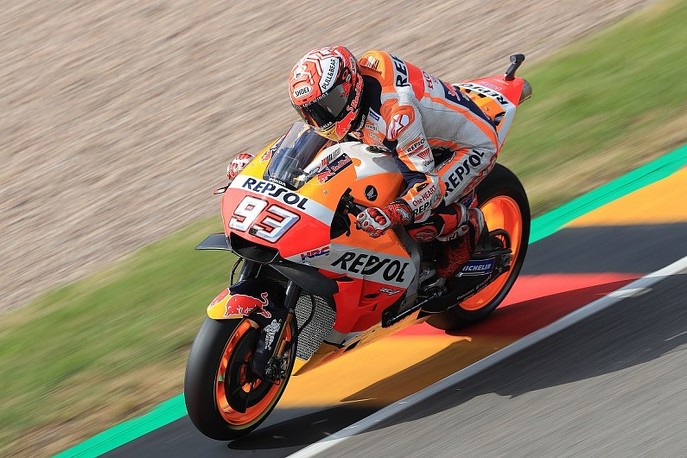How Marc Marquez pulled off his latest bike-swapping tricks in Germany

Marc Marquez earned his ninth triumph in a row at the Sachsenring - a winning streak which makes him King of the Ring.
The Sachsenring is a narrow and short track (in fact, the shortest on the MotoGP calendar), so grid position is crucial and qualifying sessions therefore become more relevant.
The reigning champion's answer to the qualifying pressure was in-line with expectations: he claimed his ninth pole position in a row - beating Danilo Petrucci by just 25 milliseconds - with a unique fast-lap strategy developed between the rider from Cervera and his team at the Grand Prix of Jerez back in 2014.
Marquez took a gamble by trying to achieve pole position in just three attempts - a strategy which, up until now, has never been tested. Why? Because it requires swapping bikes twice during the 15 minute-long Q2, something he's only able to do in very specific circumstances.

Firstly, you need two bikes, and enough tyres. At the Sachsenring, the rear-tyre situation was trickier than at the front, but Marquez had only used two of the six available rear units during earlier practice sessions, meaning he had three rear tyres available for his attempt on pole.
On the front of his bike, Marquez preferred to use the hard options on the first and last attempts, and the medium compound on the second try.
Secondly, conditions were right for the Spaniard to get his tyres up to temperature quickly - this strategy doesn't make sense in wet weather.
Finally, lap length played a key role in this unique strategy. For example, in Malaysia, where riders need more than two minutes to complete a lap, Marquez's gamble would have been absolutely impossible.
The Sachsenring's short circuit played into Marquez's qualifying success. On Saturday, lap times allowed him to take a chance on three attempts because riders needed fewer than four-and-a-half minutes to complete the exit lap, the fast lap and the lap back to the pits.
On this occasion, it was Marquez's final run, and final attempt, which placed him on pole and in prime position to take the race win.
Zdroj: autosport.com
Diskusia k článku
Najnovšie galérie
































 Vladimír
Vladimír 
 Khalid
Khalid 
 Branislav
Branislav  Nikolas
Nikolas  Marcus
Marcus 